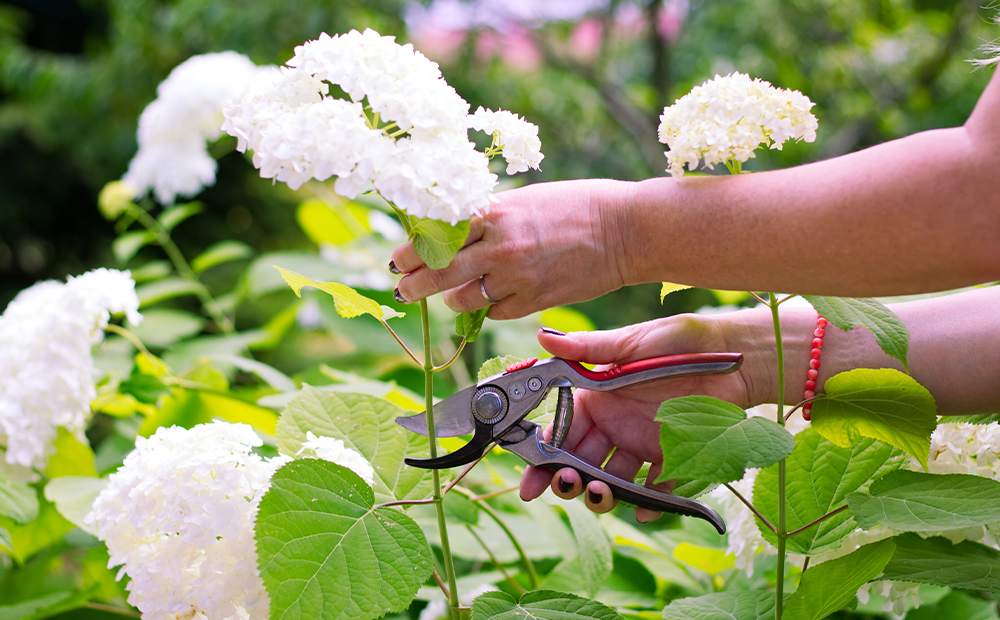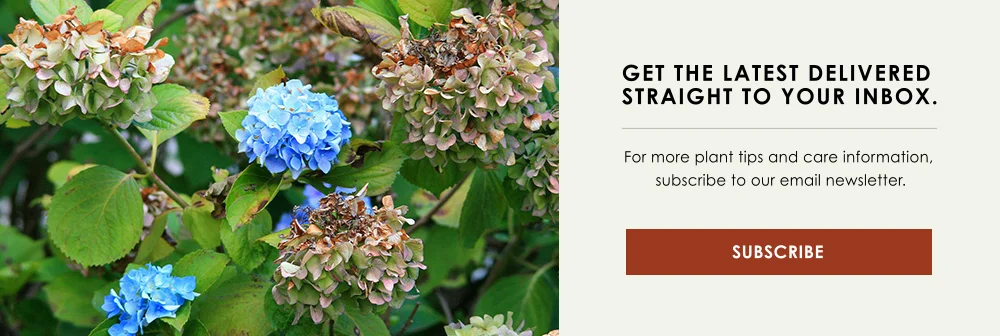HOW TO PRUNE HYDRANGEAS
It’s important to know how to prune hydrangeas properly to keep them looking their best year after year. Proper pruning is an essential part of basic hydrangea care. If you skip it, you may find your hydrangeas starting to grow unruly, produce less impressive blooms, and even grow susceptible to disease. Here are some best practices for pruning your hydrangeas.
THE IMPORTANCE OF PRUNING HYDRANGEAS PROPERLY
It’s not unheard of for gardeners to prune back their hydrangeas, only to be greeted that season with a bush of beautiful foliage and not much else. Pruning hydrangeas isn’t difficult, but it requires some very basic knowledge of your plant to do so properly. While some hydrangea cultivars bloom on old wood (meaning they set their blooms for the following year right after they finish blooming in a season), others bloom on new wood (setting their blooms in the spring). Keeping this in mind, you have to be careful to prune your shrubs at the right time to avoid cutting off all of the next year’s buds, leaving you with a flowerless bush.
WHEN TO PRUNE HYDRANGEAS
Since hydrangeas vary in terms of when and how they bloom and set new buds, there are a few differences in how to prune each of them correctly. If you’re unsure which variety you have, take a picture and bring it with you to our garden center in Indianapolis and we can help you figure it out!
For smooth hydrangeas, panicle (or PeeGee) hydrangeas, and climbing hydrangeas, the best time to prune is during the early spring while the plant is still dormant. For smooth hydrangeas, prune as early as late winter before new growth appears. For panicle and climbing hydrangeas, aim for the early spring and cut just ahead of the first fresh bud on the branch.
Many popular species, like Oakleaf, Bigleaf, and Annabelle hydrangeas, all bloom on old wood. You have a few options with these cultivars. If you want to bring in the flowers for bouquets, clip off the flowers in the fall. However, there’s something to be said for leaving the flowers on the branches through the winter, which offers unique winter interest for the overall landscape. If you choose to leave the blooms on, go ahead and wait until springtime to clip off the old blooms and dead wood—just be careful to cut ¼ inch ahead of the first fresh bud on the branch.
HOW TO PRUNE HYDRANGEAS
Always use sharp, disinfected loppers or shears when pruning all plants—not just hydrangeas! When pruning, cut the branch at a 45 ̊ angle. Wherever you can, try to cut where green wood ends and dead wood begins. Remove dead and diseased branches first, and then trim for shape.
HYDRANGEA DIEBACK
Many hardy hydrangea cultivars experience dieback over the winter, and will literally “die back” to the ground. However, looks can be deceiving and we shouldn’t be too quick to presume a hydrangea branch is really dead! In Indianapolis, hydrangeas are often slow to wake up and may not start looking “alive” again until after Mother’s Day. Wait until you see growth appearing on your hydrangea before you trim off dieback—by then, you should be able to see which branches are really goners!
WHAT ABOUT REBLOOMING HYDRANGEAS?
Some newer hydrangea varieties that have become very popular lately are reblooming varieties, such as the Incrediball and Endless Summer series. These hydrangeas bloom on both new and old wood, which means you’ll see a second wave of flowers late in the season. Because these cultivars bloom continuously, feel free to snip off some blooms during the season and fix yourself a gorgeous bouquet!
With proper pruning and care, you can expect your hydrangea blooms to get more impressive with every passing year! If this is your first year pruning your hydrangeas, make sure to visit our location in Indianapolis for the equipment you’ll need, plus expert advice on pruning your specific variety.





